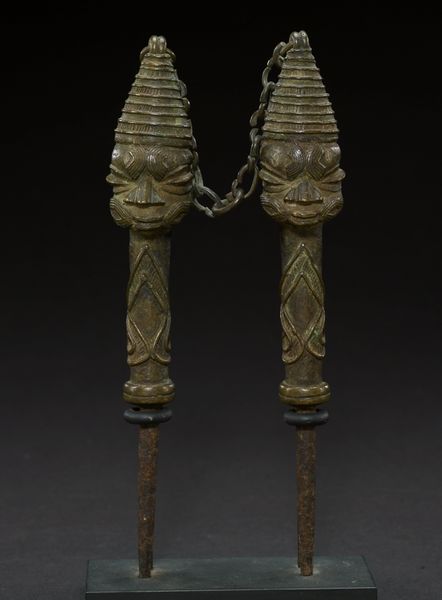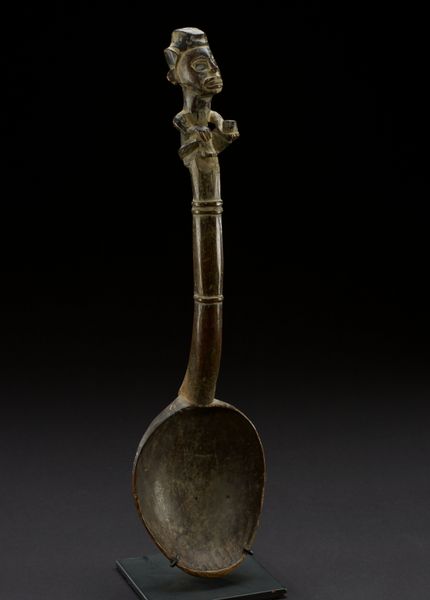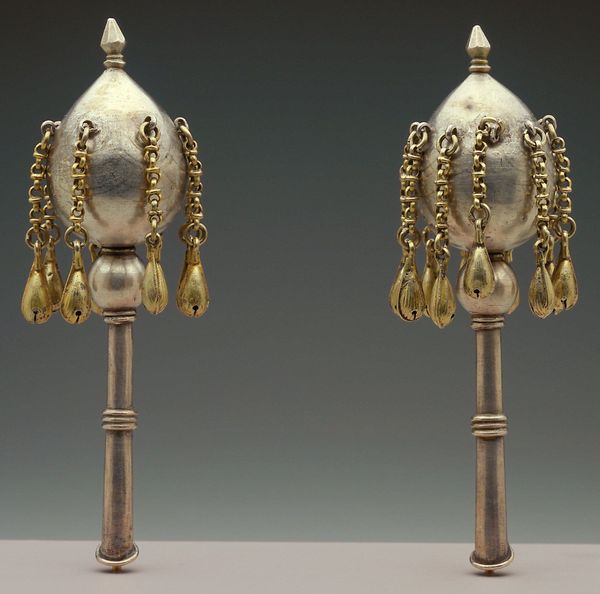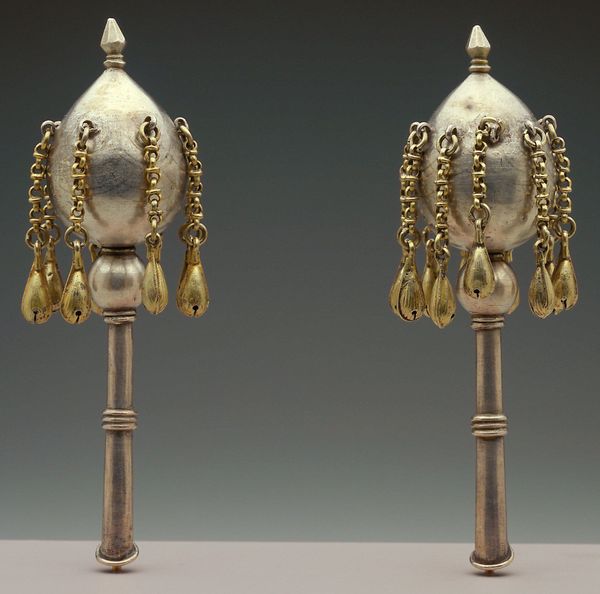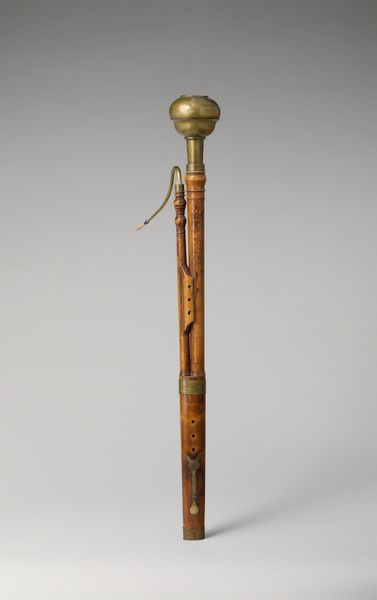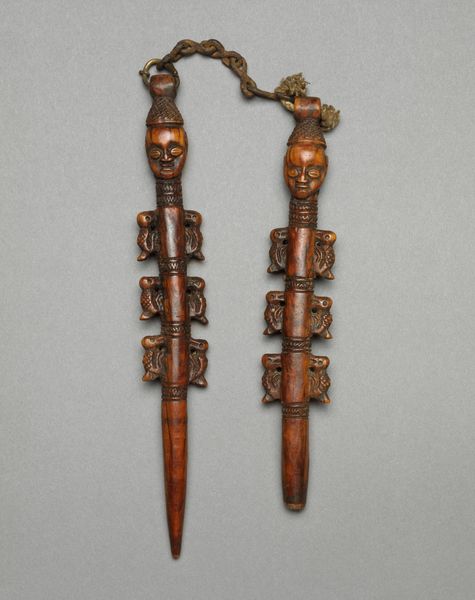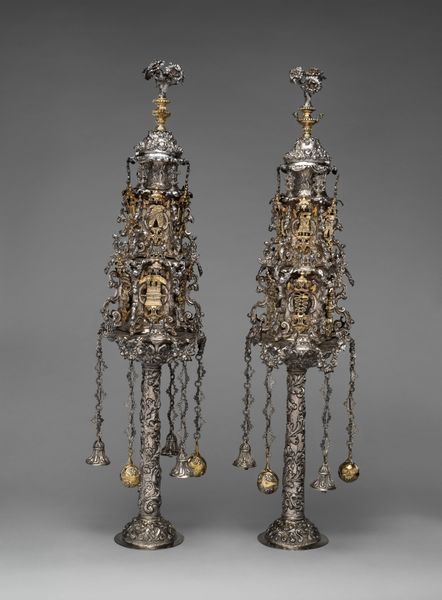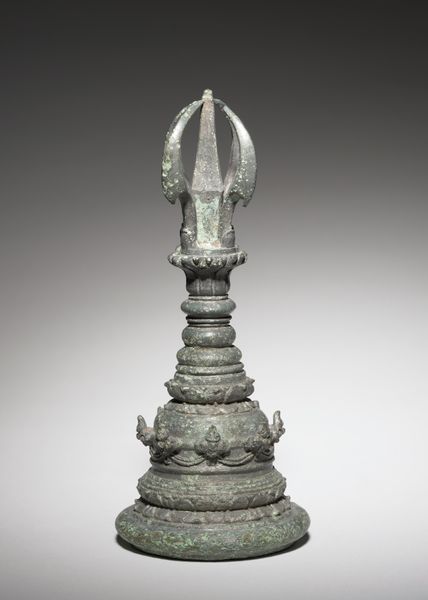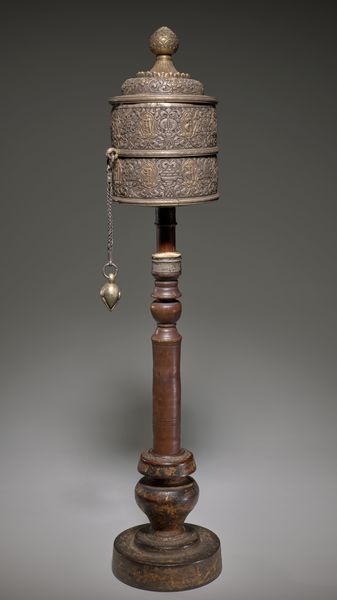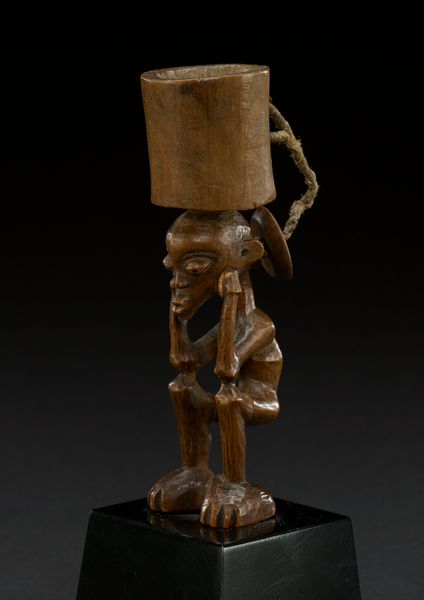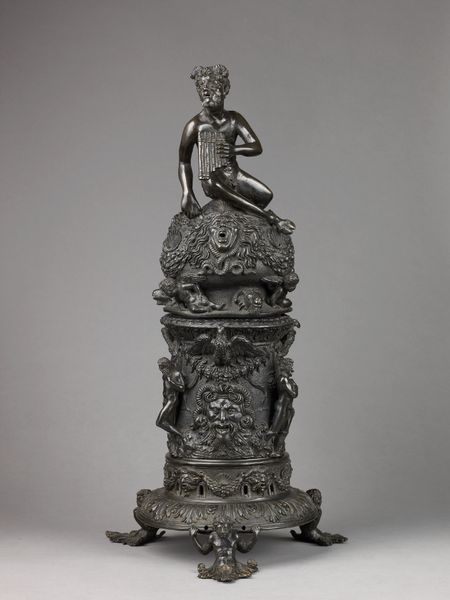
brass, carving, sculpture
#
brass
#
carving
#
sculpture
#
figuration
#
sculpture
#
yoruba-art
Dimensions: 8 1/2 × 1 1/2 in. (21.59 × 3.81 cm)
Copyright: Public Domain
Editor: We're looking at "Staff with male head," a Yoruba carving from around the 20th century, crafted from brass and held in the collection of the Minneapolis Institute of Art. What strikes me is the sense of duality – two distinct figures joined by a chain. What do you see in this piece? Curator: You know, the duality you mention sparks a memory of my own childhood – twins I knew, always together, always a little… unsettling. These staffs, though, are less about simple pairing and more about potent symbolism in Yoruba culture. Brass signifies wealth and power, the male heads are likely ancestors or deities. See how their faces, despite being similar, possess slightly different expressions? The staff isn't merely decorative; it is functional, part of ceremonies or rituals. What purpose might those linked heads serve, do you think? Editor: Perhaps they represent balance or contrasting forces that need to be joined to achieve harmony? The chain, then, literally embodying that connection. Curator: Exactly. And that's the essence of much Yoruba art—a tangible expression of complex spiritual beliefs. It's about lineage, power, and the interconnectedness of the earthly and spiritual realms. These objects *lived*, breathed within a vibrant cultural tapestry. Doesn't that make you look at it differently? Editor: It definitely does! It transforms it from just an interesting object into a powerful cultural artifact. I initially focused on the visual symmetry, but now I see the deeper narrative. Curator: Precisely. Art isn’t static, is it? It morphs with our understanding, our experiences. And hopefully, opens us to worlds beyond our own.
Comments
No comments
Be the first to comment and join the conversation on the ultimate creative platform.
